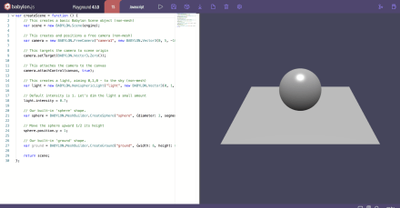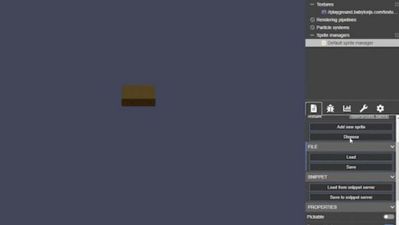by Contributed | Nov 12, 2020 | Technology
This article is contributed. See the original author and article here.
Microsoft Intune is excited to support Apple in their launch of macOS 11. We are delighted to deliver new functionality enabled by the innovations on macOS 11 – ensuring that you enable productivity for your users wherever they are working or learning this fall.
We now support the following new device configurations on Intune-managed Macs running macOS Big Sur and later:
- Non-OS software updates deferral
- “Enable direct download” setting for associated domains · 4096-bit SCEP certificate keys
- Prevent users from disabling automatic VPN
- Excluded Domains for per-app VPN connections
Starting in macOS Big Sur, all user-approved enrollments are automatically considered supervised. All Mac enrollments in Microsoft Endpoint Manager except those enrolled using Automated Device Enrollment (ADE) are considered user-approved. As currently enrolled devices update to macOS Big Sur, IT will be able to exercise the same level of control on these devices as supervised macOS devices enrolled using Automated Device Enrollment or Apple Configurator.
A new restriction for managing non-OS software updates on macOS 11 is now available in the Microsoft Endpoint Manager admin center. You can now defer the visibility of non-OS software updates up to 90 days on supervised devices. This new setting enhances the existing software update delay restriction to provide IT greater manageability of software updates. Existing restrictions will automatically migrate to the new setting and remain unchanged.
macOS 11 also introduces support for managed apps that bring many new app management capabilities similar to what is already available with iOS and iPadOS. macOS 11 enables IT to convert installed apps to managed apps, remotely uninstall managed apps on a managed device, and automatically remove all managed apps when the device is no longer managed. You can now utilize many of these new app management experiences in Microsoft Endpoint Manager admin center when configuring VPP apps (purchased apps and custom apps provisioned using Apple Business Manager) and line-of-business apps running on macOS 11. All purchased and custom apps on macOS 11 are now automatically installed as managed, allowing you to configure for each Azure AD group whether the app would be removed when the Mac is no longer managed.
We are also introducing the “uninstall” assignment type for VPP and line-of-business apps on macOS 11 that is applicable when an app is installed as managed. When adding line-of-business apps for macOS, you will now notice a new setting that allows you to choose whether the app should be installed as managed on macOS 11. This gives you the flexibility to deploy enterprise apps that may not yet be ready to be installed as managed on macOS 11. It is important to note that a line-of-business app can only be installed as managed on macOS 11 or higher when the app distributable contains a single app without any nested packages and installs to the /Applications directory. Any line-of-business app that diverges from this requirement should be installed as unmanaged on macOS 11.
macOS Intune Company Portal and Intune MDM agent are supported on both Intel and Apple Silicon Macs running macOS 11. While we are excited to see the ability to run iOS/iPadOS apps on macOS 11, M365 apps built for iOS/iPadOS are not available on macOS. Therefore, the Microsoft Intune App SDK for iOS is only supported on iOS/iPadOS. For the best M365 experience, we will continue to support M365 apps built natively for macOS. Learn more about M365 apps on Apple Silicon.
In upcoming releases, we plan to add even more features to support your Apple management journey including skipping Accessibility pane during Automated Device Enrollments and associated domains for per-app VPN connections on macOS Big Sur and later.
Apple posted updated versions of operating system software license agreements to Apple Business Manager on September 16, 2020. Your organization won’t be able to enroll devices or deploy new apps until an administrator has signed into Apple Business Manager and accepted the new terms.
For more information, see the Apple Support article: If Apple Business Manager or Apple School Manager asks you to approve new terms and conditions.
What should you do now?
If you haven’t been testing with the public beta releases, be sure to test your scenarios now that macOS 11 is releasing.
Test out new Endpoint Manager functionality and see how it might apply to scenarios in your organization.
If you haven’t already, accept Apple’s new versions of operating system software license agreements in Apple Business Manager.
Keep us posted on your favorite new feature and as always let us know if you have any additional questions or feedback. You can comment on this post or reach out to us on Twitter by tagging us at @IntuneSuppTeam.

by Contributed | Nov 12, 2020 | Technology
This article is contributed. See the original author and article here.
 Title: Recording – Price Transparency and Touchless Intake: Empowering Patients; Delivering Opportunity to Providers
Title: Recording – Price Transparency and Touchless Intake: Empowering Patients; Delivering Opportunity to Providers
On November 11th Natalie Lawrence, Director, Business Development, Connected Consumer Health Change Healthcare, presented on the following:
Biological and regulatory issues have converged in 2020, creating action items for providers, particularly those in the patient access function. The CMS price transparency rule goes into effect January 1 and the impact of COVID-19 is ongoing, driving providers to look at new patient intake processes to help prevent contagious disease spread. But rather than approaching these issues as compliance burdens, providers can use these events as an opportunity.
During this session, we review the CMS price transparency rule and what it means to your organization…and how you can leverage it to your benefit. We also look at how providers nationwide are implementing touchless processes and how technology can help enable touchless patient intake while helping your organization acquire new patients.
Resources:
Thanks for visiting – Michael Gannotti LinkedIn | Twitter
 Michael Gannotti
Michael Gannotti

by Contributed | Nov 12, 2020 | Technology
This article is contributed. See the original author and article here.
TLDR; JavaScript is an exceedingly popular language and, in many places, not just the browser. It’s also used to develop backend services, work with IoT and much more. This article shows how you can use it in yet another interesting area namely to develop 3d applications using JavaScript or TypeScript.
References
There are so many great to learn more about Babylon.js it’s features and how to build apps with it.
The Babylon.js homepage is a great place to start. It gives you a great overview of Babylon’s features and also showcases some really impressive demos.
This doc describes the 4.2 release and most of it’s new and exciting feeatures. If you’re already into Babylon.js or have worked with 3D before, this should really interest you.
Take certification in JavaScript
JavaScript certification
Node.js path, learn JavaScript on the backend
Node.js path
As soon as you learn 3D you can start applying that and add Augmented Reality (a layer on top of reality) to your apps
Augmented reality LEARN module
Here you can edit code samples and see it being rendered in the browser, no set up required. There’s also lessons that teaches you Babylon.js, feature by feature.
What is Babylon.js
Babylon.js is a 3D engine that helps you build games and other kinds of 3D visualizations. You can use JavaScript or TypeScript to do so.
According to the creators, Babylon.js is a:
powerful, beautiful, simple, and open game and rendering engine packed into a friendly JavaScript framework
That sure promises a lot but Babylon.js really delivers on its raw set of features and how simple it is to learn.
How can I learn
I don’t know anything about 3d applications or 3d in general, can you help me?
Yes, Babylon.js has a playground functionality, found at:
https://playground.babylonjs.com/
The playground consists of a two-part window where the left side displays code and the right side the result. You can then interact with the code and see the result on the right side. Here’s a picture of what it looks like:

Looks exciting, can’t wait to try that :)
Wait, there’s more, much more in fact. There’s a ton of lessons that lets you learn Babylon.js’s features at your own pace:

Sweet, I might have to call in sick just to play with that :)
Yea, why not make it your career?
Hmm, what game development?
There’s all sorts of industries looking for people with 3d visualization skills.
Really who?
Well, more and more industries out there want to visualize their data in a new and interesting way, it could be used to display furniture in your future home or what’s in a warehouse and so on.
Hmm, that’s good to know, I mostly saw the game industry in front of me.
Games are cool but there’s more to it than that.
For sure.
A brief look at the new Babylon 4.2 release
Building a visualization or a game in 3D is not just about writing a little code and you are done with it. It usually takes a little more than that. You usually need a few tools to work efficiently. Let’s go through some tools and concepts that are part of the 4.2 release of Babylon.js and see how they help you develop an app.
Sprites and the Sprite editor
Sprites are simple 2D objects that have textures, graphical images, on them. Even if you are building something in 3D you need a way to display things made in 2D. Usually you work with a sprite map, which packs all sprites you aim to use in one image. Packing everything into one image saves a lot of space rather than having to deal with a ton of images.
Why would there be a ton of images?
Well, imagine you have a character that’s being animated as it moves or does something in your app, every single movement is an image. Say also that you have a ton of different characters in your app. It easily builds app and let’s not forget you want to run an app in a browser.
Ok ok, I get it, sprite maps are good.
To manage sprites in an efficient way, you need some kind of tool where you can visualize what a sprite looks like and also be able to create new sprites. You are in luck, the new sprite editor does just that. Have a read about it here:

Sprite playground
Sprite docs
Particles
Particles consist of hundreds, even thousands of small sprites that when displays causes a fuzzy effect. Depending on the sprites used, this effect can look anything like a torch, a galaxy or maybe the light from a spaceship engine. Particles are something you definitely want to use in your app. Babylon.js 4.2 comes with a particle editor which makes creating and editing particles and particle effects real easy. Read more about it here:
Particle editor playground
Particle editor docs
Skeletons and the new Skeleton viewer
Characters that have arms and legs in a 3d world usually have a skeleton that can move in many ways to simulate real life movement. Being able to control what that movement feels like is key to creating app with realistically moving characters.
Skeleton viewer playground
Skeleton viewer docs
Textures and the texture editor
A texture adds a material to your object so wooden create looks wooden or a tree looks like an actual tree with barks and leaves and so on. The inspector tool helps you visualize the texture and helps you quickly find any texture problems.
Texture inspector playground
Tecture inspector docs
Babylon React Native
If you already know React this should interest you. Babylon React Native means you can build apps for mobile phones while using React Native.
Babylon React Native
Summary
In summary, Babylon.js is a great choice if you are currently using JavaScript or TypeScript and want to either visualize something in 3D or build a game. It’s also a really fun way to learn programming. Also the Babylon.js 4.2 is full of existing new features and tools you will need to be efficient building apps with it.

by Contributed | Nov 12, 2020 | Technology
This article is contributed. See the original author and article here.
TLDR; JavaScript is an exceedingly popular language and, in many places, not just the browser. It’s also used to develop backend services, work with IoT and much more. This article shows how you can use it in yet another interesting area namely to develop 3d applications using JavaScript or TypeScript.
Using Babylon.js in academia
A lot of Universities out there offers 3D programming as part of their curriculum. Babylon.js is especially suited for this purpose as you develop apps in JavaScript or TypeScript. Two languages which are readily available for the students via the browser. TypeScript can be added using a CDN or via Node.js and NPM. Babylon.js itself has a playground which enables students to learn 3D programming feature by feature while requiring no setup, as it’s embedded in the browser. Additionally, there’s a range of lessons to choose from that an educator can use to support their own teaching.
The job market looks is fairly good for engineers with 3D programming skills. It’s not only used for games but more and more for different types of visualizations in various industries.
References
There are so many great to learn more about Babylon.js it’s features and how to build apps with it.
The Babylon.js homepage is a great place to start. It gives you a great overview of Babylon’s features and also showcases some really impressive demos.
This doc describes the 4.2 release and most of it’s new and exciting feeatures. If you’re already into Babylon.js or have worked with 3D before, this should really interest you.
Take certification in JavaScript
JavaScript certification
Node.js path, learn JavaScript on the backend
Node.js path
As soon as you learn 3D you can start applying that and add Augmented Reality (a layer on top of reality) to your apps
Augmented reality LEARN module
Here you can edit code samples and see it being rendered in the browser, no set up required. There’s also lessons that teaches you Babylon.js, feature by feature.
What is Babylon.js
Babylon.js is a 3D engine that helps you build games and other kinds of 3D visualizations. You can use JavaScript or TypeScript to do so.
According to the creators, Babylon.js is a:
powerful, beautiful, simple, and open game and rendering engine packed into a friendly JavaScript framework
That sure promises a lot but Babylon.js really delivers on its raw set of features and how simple it is to learn.
How can I learn
I don’t know anything about 3d applications or 3d in general, can you help me?
Yes, Babylon.js has a playground functionality, found at:
https://playground.babylonjs.com/
The playground consists of a two-part window where the left side displays code and the right side the result. You can then interact with the code and see the result on the right side. Here’s a picture of what it looks like:

Looks exciting, can’t wait to try that :)
Wait, there’s more, much more in fact. There’s a ton of lessons that lets you learn Babylon.js’s features at your own pace:

Sweet, I might have to call in sick just to play with that :)
Yea, why not make it your career?
Hmm, what game development?
There’s all sorts of industries looking for people with 3d visualization skills.
Really who?
Well, more and more industries out there want to visualize their data in a new and interesting way, it could be used to display furniture in your future home or what’s in a warehouse and so on.
Hmm, that’s good to know, I mostly saw the game industry in front of me.
Games are cool but there’s more to it than that.
For sure.
A brief look at the new Babylon 4.2 release
Building a visualization or a game in 3D is not just about writing a little code and you are done with it. It usually takes a little more than that. You usually need a few tools to work efficiently. Let’s go through some tools and concepts that are part of the 4.2 release of Babylon.js and see how they help you develop an app.
Sprites and the Sprite editor
Sprites are simple 2D objects that have textures, graphical images, on them. Even if you are building something in 3D you need a way to display things made in 2D. Usually you work with a sprite map, which packs all sprites you aim to use in one image. Packing everything into one image saves a lot of space rather than having to deal with a ton of images.
Why would there be a ton of images?
Well, imagine you have a character that’s being animated as it moves or does something in your app, every single movement is an image. Say also that you have a ton of different characters in your app. It easily builds app and let’s not forget you want to run an app in a browser.
Ok ok, I get it, sprite maps are good.
To manage sprites in an efficient way, you need some kind of tool where you can visualize what a sprite looks like and also be able to create new sprites. You are in luck, the new sprite editor does just that. Have a read about it here:

Sprite playground
Sprite docs
Particles
Particles consist of hundreds, even thousands of small sprites that when displays causes a fuzzy effect. Depending on the sprites used, this effect can look anything like a torch, a galaxy or maybe the light from a spaceship engine. Particles are something you definitely want to use in your app. Babylon.js 4.2 comes with a particle editor which makes creating and editing particles and particle effects real easy. Read more about it here:
Particle editor playground
Particle editor docs
Skeletons and the new Skeleton viewer
Characters that have arms and legs in a 3d world usually have a skeleton that can move in many ways to simulate real life movement. Being able to control what that movement feels like is key to creating app with realistically moving characters.
Skeleton viewer playground
Skeleton viewer docs
Textures and the texture editor
A texture adds a material to your object so wooden create looks wooden or a tree looks like an actual tree with barks and leaves and so on. The inspector tool helps you visualize the texture and helps you quickly find any texture problems.
Texture inspector playground
Tecture inspector docs
Babylon React Native
If you already know React this should interest you. Babylon React Native means you can build apps for mobile phones while using React Native.
Babylon React Native
Summary
In summary, Babylon.js is a great choice if you are currently using JavaScript or TypeScript and want to either visualize something in 3D or build a game. It’s also a really fun way to learn programming. Also the Babylon.js 4.2 is full of existing new features and tools you will need to be efficient building apps with it.

by Contributed | Nov 12, 2020 | Technology
This article is contributed. See the original author and article here.
As a Cloud Workload Protection Platform (CWPP), Azure Defender provides protection against cyber threats aimed at servers, no matter whether they are running in Azure, on–premises, or in another cloud platform. For more information about the importance of CSPM and CWPP to manage visibility and control of your cloud workloads, read this article. It also offers protection against cyber threats aimed at your cloud-native workloads in Azure, such as Azure Container Registry, Azure Key Vaults, Storage Accounts, AKS, SQL databases and many more. Learn more about all the resource types that Azure Defender can secure here.
Azure Container Registry (ACR) is a managed, private Docker registry service that stores and manages your container images for Azure deployments in a central registry. Azure Defender for container registries brings deeper visibility into the vulnerabilities effecting the container image. It scans every image for vulnerabilities and provides security recommendations using an integrated scanner powered by Qualys, the industry-leading vulnerability scanning.
To enable the integration of Azure Defender and ACR, make sure you have Azure Defender ON and Container Registries plan enabled under Azure Defender plans as shown in Image 1
 Image 1: Enable Container Registries under Azure Defender plan
Image 1: Enable Container Registries under Azure Defender plan
hich should be available in all regions by end of month. With continuous container image scans, ASC re-scans images (vs. once upon “push” action that we offer currently. Read more about it here), as new vulnerabilities are discovered over time. When an image is rescanned, a new recommendation is created overriding the previous scan/recommendation with all its related findings (only last scan results are available per image in ASC). We released continuous export of the findings as well. To learn more about continuous export please refer to this article
This blog post introduces an automation playbook that you can use to receive an email notification for any newfound vulnerabilities (findings) per image, compared to the last scan of the same image. This becomes more critical now that ASC is introducing continuous scans where the same image would be rescanned on a daily basis.
How to deploy the automation playbook
You can find an ARM template that will deploy the Logic App Playbook and all necessary API connections in the Azure Security Center GitHub repository Once you have deployed the ARM template, you will have some manual steps to take before it works as expected.
Authorize Office 365 API Connection
This API connection is used to send emails once a new resource exemption is created. To authorize the API connection:
- Go to the Resource Group you have used to deploy the template resources.
- Select the Office365 API connection and press ‘Edit API connection’.
- Press the ‘Authorize’ button.
- Make sure to authenticate against Azure AD.
- Press ‘save’.
Authorize the Logic App’s managed identity
The Logic App is using a system assigned managed identity to query information from the resource exemption and policy set definitions APIs. For this purpose, you need to grant it the reader RBAC role on the scope you want it to be used at. It is recommended to give it reader access on the tenant root management group, so it is able to query information for all subscriptions once relevant. To grant the managed identity reader access, you need to:
- Make sure you have User Access Administrator or Owner permissions for this scope.
- Go to the subscription/management group page.
- Press ‘Access Control (IAM)’ on the navigation bar.
- Press ‘+Add’ and ‘Add role assignment’.
- Choose ‘Reader’ role.
- Assign access to Logic App.
- Choose the subscription where the logic app was deployed.
- Choose the Logic App you have just deployed.
- Press ‘save’.
How does it work
The workflow is scanning images on a schedule. It’s getting the list of <image_unique_identifier> from recommendations generated in last 24hrs. For each <image_unique_identifier>, it gets the latest recommendations in last 24hrs compares them to the latest recommendations from beyond 24hrs, marks and sends email notification to only new findings that did not exist 24hrs ago (as shown in the sample email from ‘image 2’) and in an instance where there are no new findings in a scan, no email will be sent.
For example
- If this is the 1st time an <image_unique_identifier> gets scanned, all findings would be reported in an email
- If this is the 2nd time the <image_unique_identifier> is scanned, only findings that were not included in the 1st scan would be reported.
- If this is the 3rd time the <image_unique_identifier> is scanned, only findings that were not included in the 2nd scan would be reported.
And so on…
 Image 2: example email notification of a new image scan
Image 2: example email notification of a new image scan
To learn more about Continuous Export, make sure to watch Episode 5 of Azure Security Center in the Field where we give more insights on this feature.
Make sure to take advantage of this automation artifact and stay on top of vulnerabilities in your container images to keep your environment secure.
Let us know your feedback using any of the channels listed in the Resources
Reviewers
Maya Herskovic, Senior Program Manager – ASC Engineering Team
Yuri Diogenes, Principal Program Manager – CxE ASC Team





Recent Comments